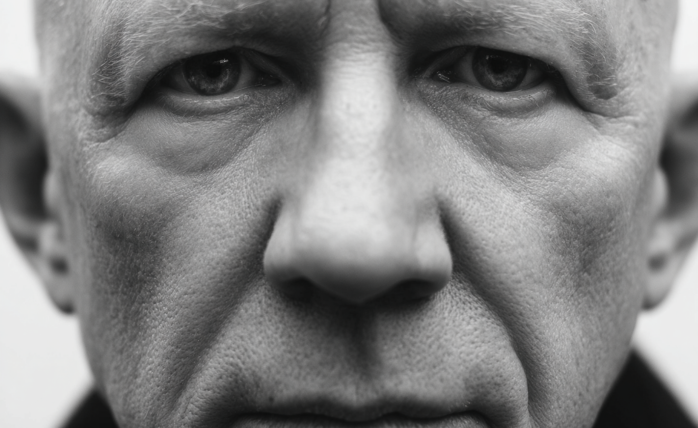Change Your Mindset
Need Help Reaching Your Goals? This 6 Step Process Is For You

Nobody wants to fail and everyone wants to succeed. Every day, people are struggling to reach their goals and achieve success. A failure is a painful event and one that almost all of us work tirelessly to avoid. However, no matter who you are, failure is unavoidable. Not only that, but as much as you hate to fail, failure is still necessary for your success. There can be no success without failure.
This is because when we fail, we tend to ponder, we search for deeper meanings, and we grow in the process. Hence, do not shun failure. The key is not to avoid failure, but to learn how to manage it when it comes.
So when you fail to reach your goals, here is the 6-step process you can use to bounce back higher:
1. Failure is just your perception
The first thing you need to understand when you fail to achieve your goals is that failure is just your perception. Like Henry Ford famously said, “Whether you think you can or you can’t, you are right.” You have to understand that there is no good news or bad news, it is just news.
Hence, when you fail, don’t treat it as a failure, instead, choose to look at it as an opportunity to learn and a lesson for growth. The difference between successful people and unsuccessful people is that successful people look at things from a positive perspective while unsuccessful people look at things from a negative point of view.
When you fail, it doesn’t mean that you are a failure. You are only a failure when you choose to quit and give up. Remember, failure is just an event, not a person. Change your perception of failure and things will start to change.
2. Focus on what you can learn
The next step you need to do is to find out what you can learn from your failure. It is not easy, but once you switch your perception and look at failure as something good, things can change. A lot of people look at failure as the opposite of success, which is not true at all. Failure is not the opposite of success, it is part of it.
Tony Robbins said it wisely, “Success in life is the result of good judgment. Good judgment is usually the result of experience. Experience is usually the result of bad judgment.” Hence, when you fail to achieve your goals, ask yourself, “What does this mean and what can I learn from it?”
Focus on what you can learn and not the problem. When you treat failure as a lesson and you gained a new perspective from it, you become someone better and more worthy of the goal.
3. Remember your dream
The third step you can do is to remind yourself of your dream. When you see yourself achieving your goals and are living your ideal lifestyle, you feel motivated. This is important because one of the main reasons people fail to hit their goals is that they lose interest in what they want.
They started strong in the beginning, but as the days went by, their motivation started to fade and they were distracted by everything that is happening in their daily lives. As a result, they lose connection with their goals and eventually, they stop taking action and they give up.
Never let this happen to you. Make sure you think about your dreams and put your goals in your mind every moment.
4. Recall your purpose and rediscover your passion
The next step you should take is to recall your purpose and reignite your passion. Remember, what gets you started is your purpose and what gets you going is your purpose. And you can’t go on without both. Your purpose is the lighthouse that guides you through thick and thin. And your passion is the fuel that drives you to take action each day.
So rediscover your purpose. Why do you want to achieve the goals? Why do you want to reach your dreams? The stronger and the more emotional your purpose, the stronger the motivation.
5. Plan and recalibrate
Once you’ve reignited your passion, it is time to plan ahead once again and recalibrate your action steps. At this point, you should understand better why you fail in the first place. Maybe you are not taking enough action. Maybe your approach did not work. Or maybe you should just try again one more time.
Whatever you do, create a new plan and start over again. Never underestimate the power of planning. Like Larry Winget said: “Nobody ever wrote down a plan to be broke, fat, lazy, or stupid. Those things are what happen when you don’t have a plan.” Your plan tells you what you need to do to reach your goals. And of course, the final step is about taking action.
6. Take action and bounce back
The final step is to bounce back by taking massive action. By now, you have only two options. One, you choose to sit and do nothing. This will never get you anywhere. If you are stuck in a rut, doing nothing is not going to help at all. You need to make progress, which leads you to option two: Take massive action.
Even if you are on the right track, you will get run over if you just sit there. Do understand that people don’t drown by falling into the water. They drown because they stay there. This is why you need to keep moving. Therefore, take massive and consistent action according to the plan that you have created.
Use These Tools To Reach Your Goals
Failing to achieve your goals is something common. Even Thomas Edison was said to have failed over 10,000 times. However, the difference was that Edison did not give up. He knew how to manage his failures and he did not see his failures as failures. Sometimes all you need is to follow simple steps to achieve your goals and create your dream life!
Like all successful people, Edison chose to look at failures as an opportunity to learn and grow. If you want to turn the situation around and bounce back to reach your goals, incorporate these 6 steps into your life.
Don’t let fear of failure stop you! Learn how to change your mindset to be more success-focused with Addicted 2 Success!
Life
10 Research-Backed Steps to Create Real Change This New Year
This New Year could finally be the one where you break old patterns and create real, lasting change.

Every New Year, we make plans and set goals, but often repeat old patterns. (more…)
Change Your Mindset
The Silent Skill That Makes People Respect You Instantly
What truly earns respect and why most people go about it the wrong way

Everybody craves respect but not everyone earns it. Some people believe that a title, years of experience, or a position of authority automatically entitles them to respect. (more…)
Change Your Mindset
How to Turn Your Mind Into Your Greatest Asset (Instead of Your Enemy)
The thoughts you feed your mind today quietly become the life you live tomorrow.

The human mind has two parts: the conscious mind and the subconscious mind. Both work together, but each has a very distinct role in shaping your life, decisions, habits, and results. (more…)
Did You Know
The Success Patterns You Inherited (And Didn’t Notice)
Your family history may hold the key to why you think, act, and feel the way you do today.

Who are you? Your experiences and your family’s narratives and legacies contribute to your identity. Your ancestry contains individual traits and forces that have been inherited over the years. It also carries the fights and victories of your forebears and older family members. (more…)
-

 Change Your Mindset4 weeks ago
Change Your Mindset4 weeks agoThe One Leadership Habit That Separates the Great From the Forgettable
-

 Personal Development3 weeks ago
Personal Development3 weeks agoThis Silent Habit Might Be Sabotaging Your Career
-

 Business3 weeks ago
Business3 weeks agoWhy Your E-Commerce Fulfilment Is Probably Broken (And How to Fix It)
-

 Shift Your Mindset2 weeks ago
Shift Your Mindset2 weeks ago11 E’s That Define Every Great Leader And Why Most People Miss Them
-

 Did You Know2 weeks ago
Did You Know2 weeks agoThe Success Patterns You Inherited (And Didn’t Notice)
-

 Business2 weeks ago
Business2 weeks agoThe Hidden Money Pit in Your Operations (and How to Use It)
-

 Entrepreneurs1 week ago
Entrepreneurs1 week agoThe Essential Skills Every Entrepreneur Needs In 2026
-

 Change Your Mindset6 days ago
Change Your Mindset6 days agoHow to Turn Your Mind Into Your Greatest Asset (Instead of Your Enemy)


























